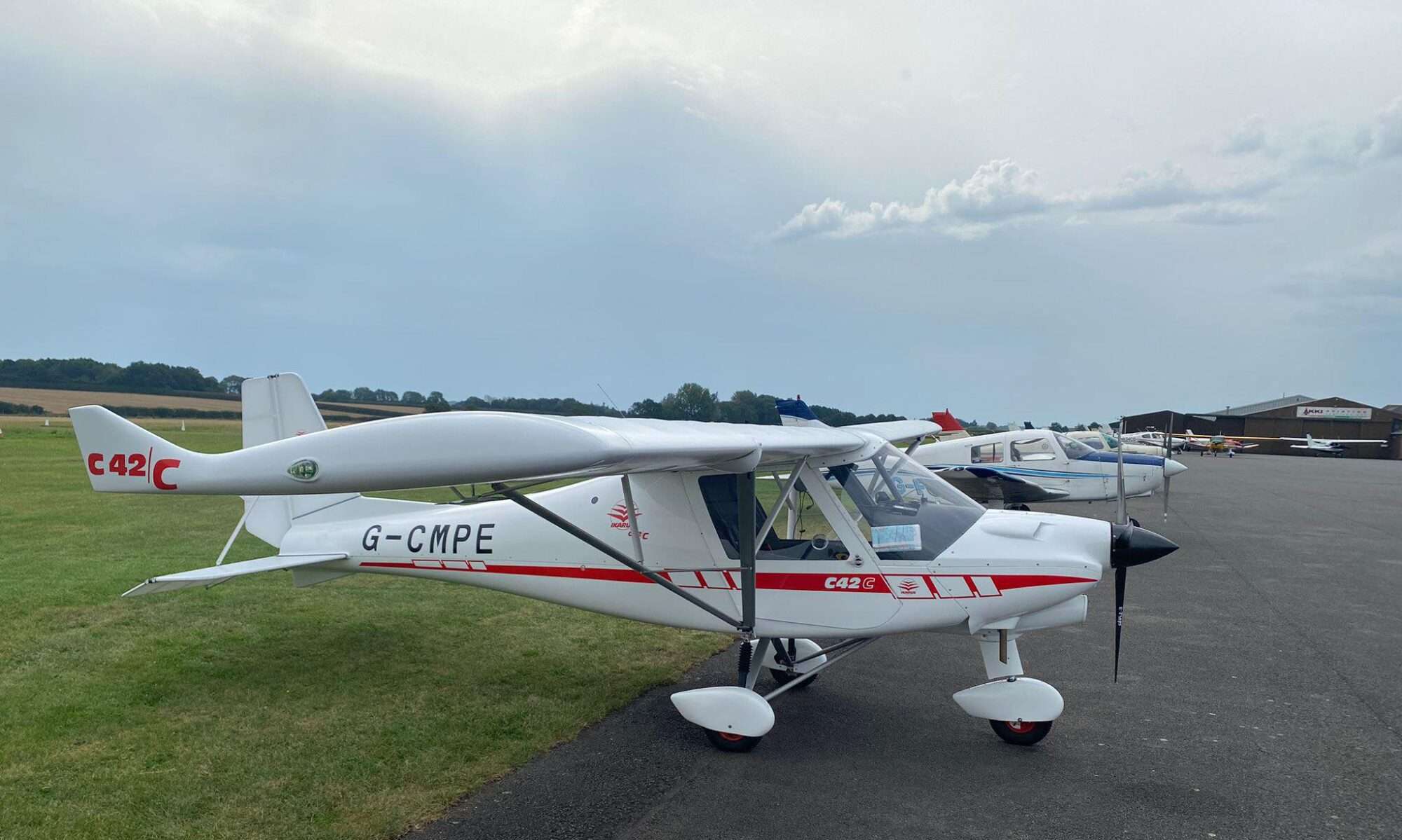Today my flying lesson was moved forward by 1 hour as the British weather forecast showed a cold front moving through around the time my lesson would be ending; it was Katie that had spotted this and the foresight to move it.
When I arrived I duly burped the aeroplane and pre-flight checked our C42 over, I could not get it out of the hanger as the wing would not clear Mick’s C42 if I tried. Not wanting to take any chances I went into the club house and asked Mick for his assistance and he happily obliged taking his aeroplane out of the hanger as he would be flying a little latter. I don’t like moving any aeroplane even the one I have shares in on my own, I believe it to be safer to have two people to do it one watching each side. This way the risk of causing “Hanger Rash” is reduced! For those that have not heard the term before, hanger rash is when one aeroplane bumps another and causes damage however slight. We have recently been the victims of hanger rash and although it only caused light damage to the aileron covering, it could had caused damage to the rods inside; this is why whenever you witness or cause hanger rash it is very important to report it, so the owner of the other aeroplane can check it out before flight. However there is a tendency to cover it up or not report it probably due to the fear of the costs of fixing the damage; however the real cost could be so much higher if not reported! Maybe the BMMA or someone could do a piece on it!
Anyway Katie and I were off and decided to do a flapless take off due to the wind, it was a good job too as it would have been very easy to over speed the aeroplane’s VFE in these conditions.
Once again as we cleared the runway Katie declared an engine failure and I selected a field and we would have been down OK, these I don’t seems to have too many issues with.
We flow west towards the approaching front thus ensuring we could get back if it moved in on us. We made a few PFLs and I got in to some and was sort on others and even too high on a couple. The gusting strong wind made it difficult to judge. My selections of field although fine from on high often had power cabled crossing them as we got closer, making me reselect an alternative field. A tip from Katie here is to check if they have straight plough lines or if they have a “bump” in them if they do it is probably where they have gone around an electricity pole!
As the wind was too high for the parachutists we overflew Chatteris airfield and tried a couple PFLs there, again I was too short and then to high on my last attempt I got it just about right, however I thought I was going short an got my self-transfixed on the runway threshold causing me to round out a bit high resulting in a bit of a bump as we landed! another thing in today’s lesson I had not come across before, is lowering the nose slightly in a strong wind will help stretch the glide a little, here we are only talking 5 kts or so and only a marginal extension in ground coverage, but every few feet could count in a real engine failure!
At least today I remembered to clean the aeroplane up on the taxi back, strobe off, transponder off and flaps up.
Another good thing today, the aeroplane was not to muddy so it was quick to clean, which was good as just after putting her away in the hanger the rain started, good timing!



There’s some good tips on field selection, including a section on wires in this video: https://www.youtube.com/watch?v=Yk_d0EevvZE Well worth watching.